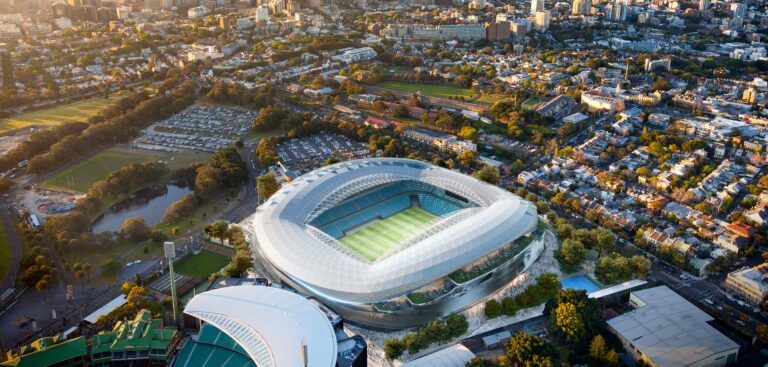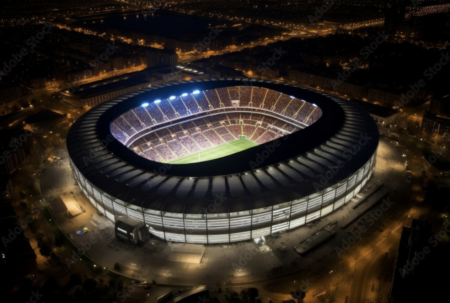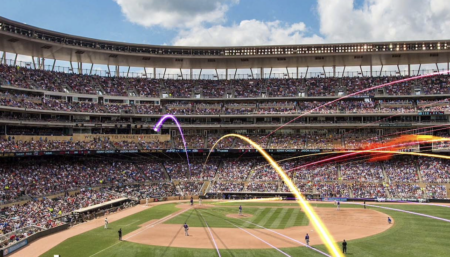Talk us through the future projects coming up at Cox Architecture? What are the most interesting aspects of these?
Cox is currently working on the redevelopment of Sydney’s iconic football stadium. This boutique 42,000 seat stadium will be home to three professional football codes (Rugby Union, Rugby League and Football) providing a community-based stadium that responds to multiple users as well as being a stadium focused on the delivery of community membership and engagement. In keeping with the tradition of community membership models in Australia the venue provides facilities for a broad range of the community and is a far cry from the purely commercial/corporate stadia development model the USA and UK. Due to be completed in 2022 it will be a community asset and one of the most advanced and sustainable venues in the region, and a fitting continuation of the legacy of previous stadium (also designed by Cox).
Cox is also responsible for the reference design for the redevelopment of ANZ Stadium, the flagship venue of the Sydney Olympics in 2000. The new design addresses the shortcomings of the original Olympic venue by addressing the issues of proximity and fan engagement in athletic venues. The redevelopment allows for the reconfiguration of the seating bowl (originally designed for athletics and adjusted in the Olympic legacy for football and Australian Rules Football), to be a dedicated rugby and football stadium where the fan experience is foremost. This continues a legacy debate around the true legacy value of athletic venues and the need to make sure Olympic venues have a commercial and community legacy that goes beyond the original event. The proposed design brings fans closer to the action and provides a translucent roof that allows light in while providing shade and shelter for fans. These are two of the most significant sporting infrastructure projects in Australia at present, and community interest in both is huge. We’re also working on smaller community venues for soccer, cricket and Australian Rules Football.
Cox is also continuing to work with sporting clubs and community groups to provide world-class facilities for both elite training and community sport, and advising governments and sporting bodies across Asia Pacific on maximizing revenue, overlays for major games (Commonwealth Games, Asian Games, Tokyo Olympics) and ensuring investment in sport and entertainment infrastructure provides an ongoing positive legacy for their cities and communities.
What builds are currently in construction? Have you encountered any challenges with them?
We are working on, or have recently completed, elite cricket training facilities in three Australian states, Victoria, New South Wales and South Australia. All of these facilities double as community venues as well, something that is central to our ethos: to provide the best of the best and make it accessible to all. We have also recently completed three redevelopments of tennis venues, most notably Rod Laver Arena, home of the Australian Open. The importance of this venue to Victorians and to the global tennis community cannot be overstated, so there was huge pressure on us to get it right. Attendance figures for the 2020 AO broke all existing records, with 812,000 fans through the gate, and we are very pleased with the reception of the redevelopment, which was all about improving the fan and player experience. Our redevelopments of Ken Rosewall Arena (Sydney) and Memorial Drive (Adelaide) both involved finding elegant solutions to roofing Centre Court, improving fan and player comfort, and ensuring these venues can continue to host the ATP tour.

We’ve also seen the recent opening of our newest multipurpose stadium, the Queensland Country Bank stadium in Townville. This unique venue is deeply responsive to the landscape and climate of Far North Queensland, and by all accounts, Elton John and 20,000 fans had a great time at the official opening event at the end of February.
How is Cox approaching 2020? Are there any new working methods or processes being introduced? What are you most excited about, industry-wise, this year?
We are excited about our evolving offering of integrated delivery models that focus both on advanced BIM 360 and the customer experience through the virtual and augmented stadium. This holistic focus on both the technical and the social can deliver design and construction efficiencies, truly integrated sustainable design, operational excellence and a truly fan focussed experience. Our computational designers and BIM leaders are doing world-class work in this area, and it has applications for many other types of public venue. BIM 360 is allowing us to build a fully augmented reality design prior to opening which is allowing our clients to visualize and pre-sell inventory prior to the opening of the venue, this was used to great effect at QCB Stadium in Townsville which opened this year.
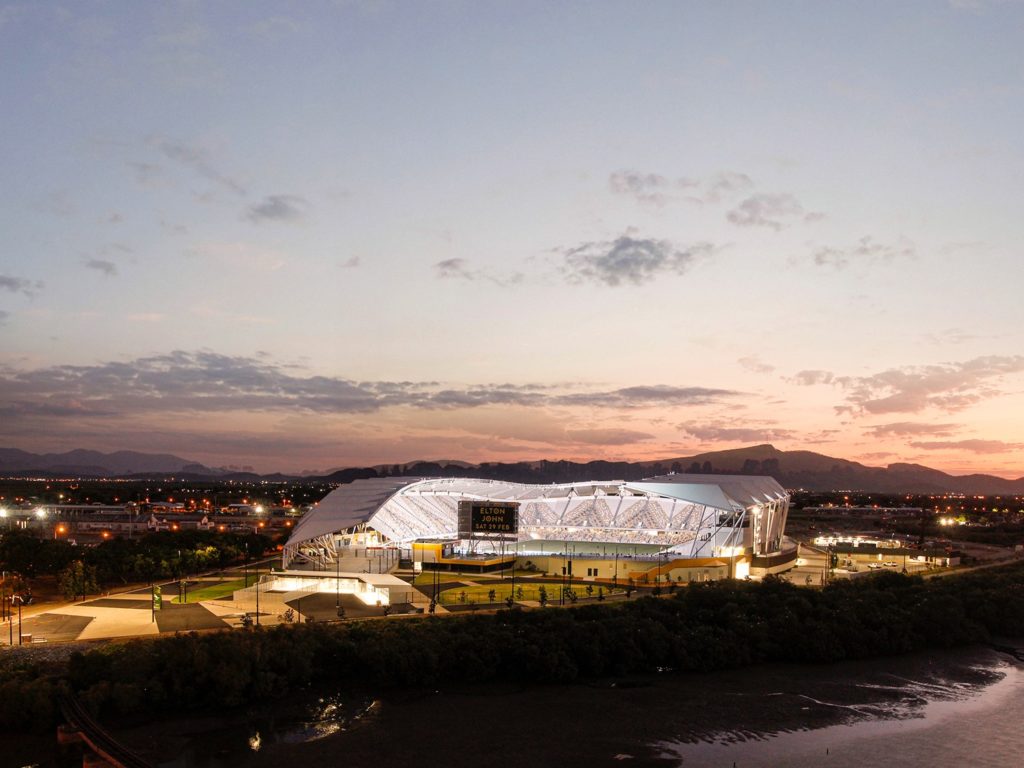
What do you expect will be the biggest sports stadium design and engineering themes this year?
Without a doubt, true sustainability. Venue operators and owners will be aiming for carbon neutrality by 2050 and at COX we believe this is eminently achievable. With Government’s and sporting code’s commitment to the Paris Accord and carbon neutrality in 2050 we are now addressing significant design issues to reduce energy consumption, embodied energy and sustainability in our venues. The advance to renewable technology is now allowing us to develop carbon neutral facilities by 2050 and we are working closely with energy providers and venue owners to achieve these outcomes. We are undertaking extensive research into sustainable structures and minimization of the use for concrete to provide effective carbon sinks and believe that these approaches go far beyond any LEED or other ‘green’ assessment tools. It is intrinsic to our design beliefs and is creating a true sustainability legacy for our clients.
What stadium design trends are beginning to grow? Is there anything that should be given more attention that currently doesn’t get enough consideration?
We will see continuing attention to multi-purpose and flexible venues as owners and operators seek to get the most out of their venues.
We need to address wealth inequality in venue design and ensure access to all areas of the community: sporting events shouldn’t be seen as only accessible to the elites. We need to remember the origins of sporting clubs and venues: that they reflect and belong to their community. With stagnant wages and increasing ticket prices, we need to find ways through design to make these great spectacles open to all. We believe this can be done by the inclusion of experiences for every price point. And this does not mean seats up in the gods with only a pie and a mid-strength beer in a plastic cup for general admission – it means quality offerings for all price points and community sectors. We believe it is as important (or more) that mum and dad can take the kids out for a great day at the footy as it is for premium products to be available to private members and corporate guests.
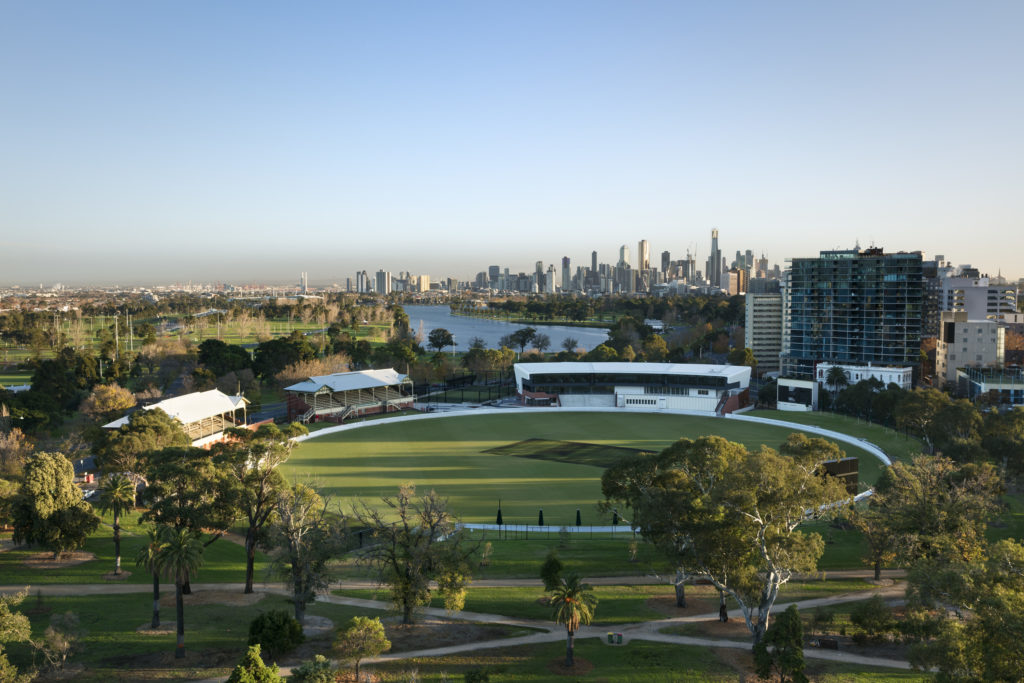
What do you expect from the Australasian region this year?
We expect to see an increased emphasis on community participation and fair play. This is demonstrated by a growing number of smaller, local venues, a focus on community facilities rather than huge flagship venues. This can be attributed to several things: aging or decrepit community infrastructure; grassroots sporting movements that are, happily, an increasingly important feature of the sporting landscape in Australia; and concerns about climate change leading to the development of smaller, more sustainable venues closer to home. Climate change is of course a huge driver in the design of sporting venues now: from designing climate-appropriate venues (Queensland Country Bank); to redevelopments to improve sustainability and thermal comfort (tennis venues); to a continuing emphasis on reuse and redevelopment rather than new build. In many cases, venues may get smaller, and they will absolutely get smarter and more responsive to suit our changing world.
Esports continues to grow, are you doing anything in this area? How do you see esports specific venues evolving?
Cox has always designed the type of facilities that are applicable to esports – multipurpose, flexible venues that put the fan at the heart of the action. We have seen, for example, our convention centers and arenas used for esports. As the appetite for esports grows, sports architects will need to find diverse ways of engaging with fans and spectators through integrated technology. Spectators want to feel they are immersed in the action. This will involve a multi-disciplinary approach with technology consultants and providers. It seems unnecessary for venues to be specifically and exclusively designed around esports: as always we believe in the economic, environmental and community benefits of flexible, multi-purpose venues. These technology-rich offerings are not unique to esports but are demanded now by spectators across sport and entertainment offerings.
While demands on physical E-Sport infrastructure will continue to evolve the truth of the facilities is still around social interaction. With this in mind, the true esports facility will be a multiple-use facility that establishes a flexible, technology-rich events platform suitable for esports, entertainment, music and X-Sports, combined with ‘social’ spaces like bars, restaurants and public plazas.


